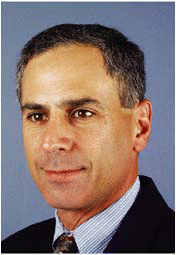“We can also help patients who’ve undergone older blepharoplasty procedures,” Dr. Papel said. “Sometimes it requires skin grafts to replace that skin; sometimes it requires only tightening up of the eyelid, suspending it from the orbital bone. Again, it goes back to preservation of natural contours and anatomy, not just removing skin and fat as was done some years ago and which was part of my original training!”
Explore This Issue
November 2006Facelifts and Other Rejuvenation Procedures
For older patients who have more lax skin and can afford both the price and the “downtime” of a facelift, this procedure still reigns supreme compared with other techniques. According to most facial plastic surgeons, the newer techniques and materials will help older patients, but they do not achieve the results—in terms of final and long-lasting appearance—that a facelift does.
However, for other people who cannot afford the time or cost of a facelift or, especially, for the large numbers of younger people who are starting earlier in their attempts to maintain a youthful appearance or correct facial defects, there are new, well-publicized options that are much less expensive. However, for lasting results, they must be repeated from time to time.
To Jonathan Sykes, MD, director of facial plastic and reconstructive surgery and professor of otolaryngology at University of California, Davis School of Medicine in Sacramento, one of them, botulinum toxin type A (Botox), used to relax muscles in the forehead, between the eyebrows, and at the edges of the eyes, is “one of the most significant developments in the last twenty years.”
Botox has a relatively low cost, no downtime, yields high satisfaction rates and has very little risk. But it has to be repeated every four to five months. Some patients even get Botox injections for prevention of wrinkles, Dr. Sykes said.
Similar products, especially those that may last longer, are in clinical trials and not far from being approved by the FDA, he added.
Injectable filler agents are also being used in patients to augment lips and to address deep facial folds and wrinkles. Fine lines above the lips or the upper melolabial folds are often treated with Restylane (a gel composed of hyaluronic acid), which has essentially replaced the collagen that was formerly used for such problems. Beneficial effects of Restylane last for about six to nine months. Radiesse (a particulate made of hydroxylapatite) has been FDA-approved for nasolabial folds. This product has beneficial effects up to two years. Yet another filler agent is Sculptra (L-lactic acid), which, according to Dr. Kridel, can be especially effective in restoring a more normal appearance to the faces of some patients with HIV.

Leave a Reply